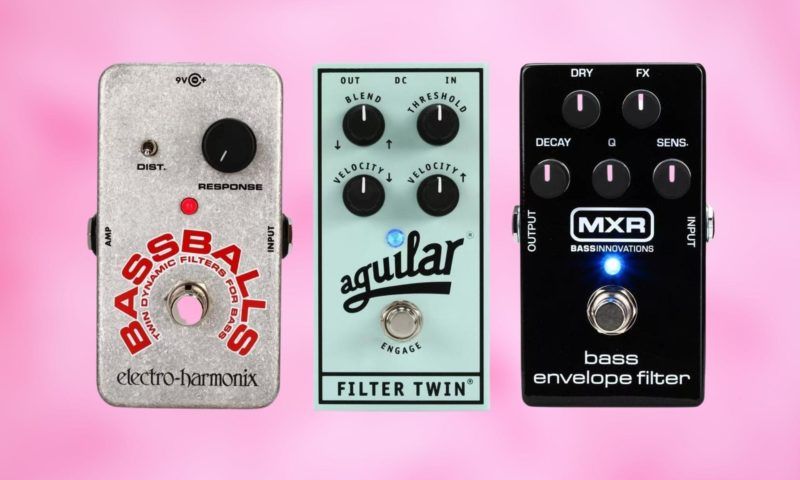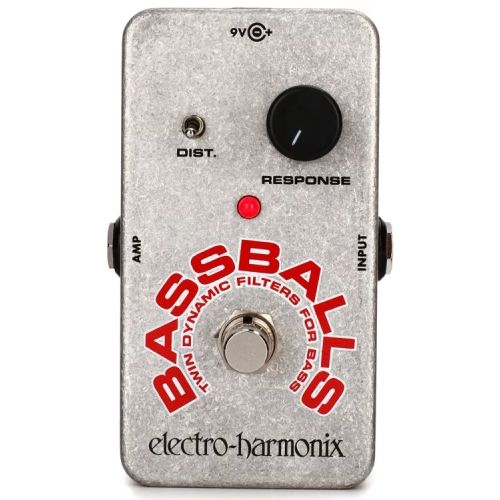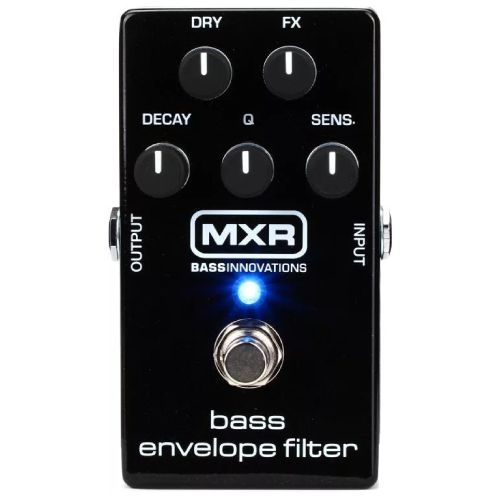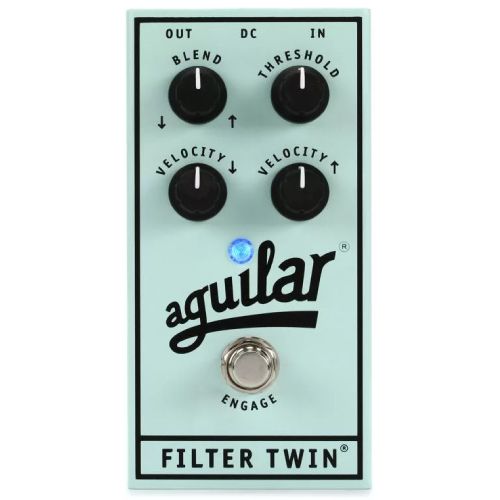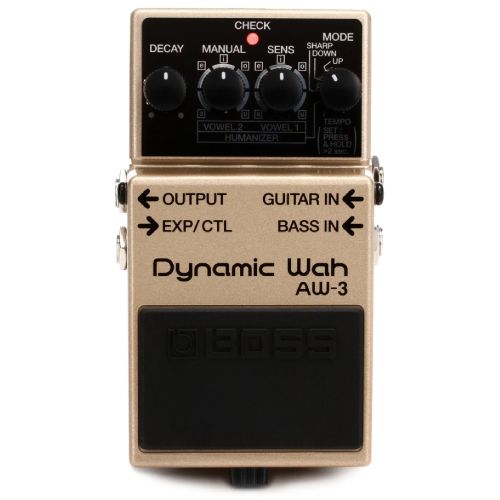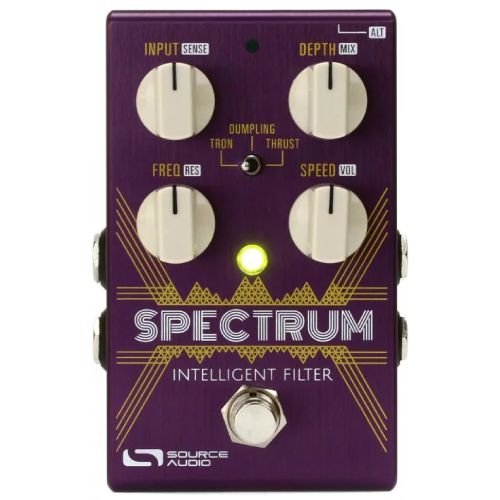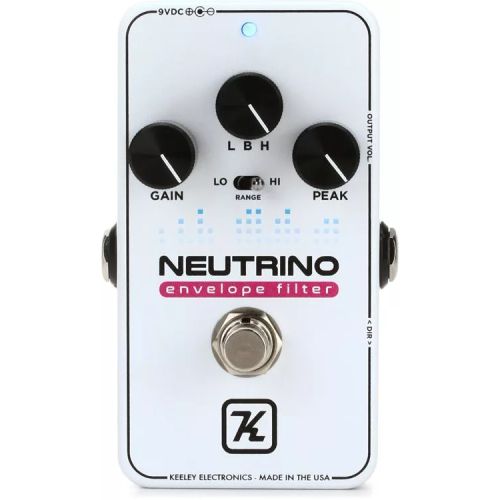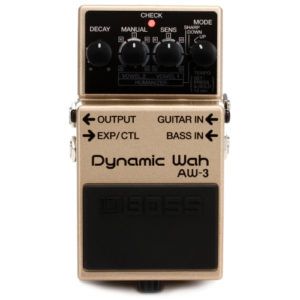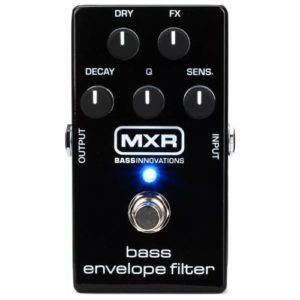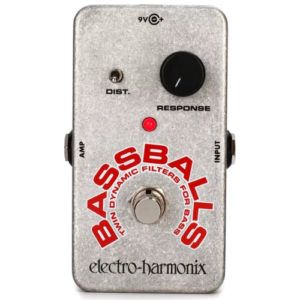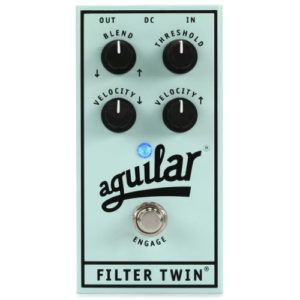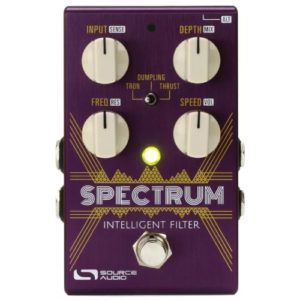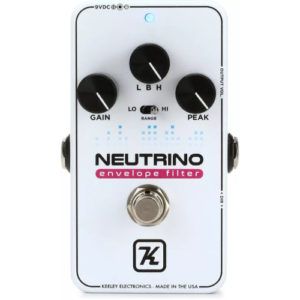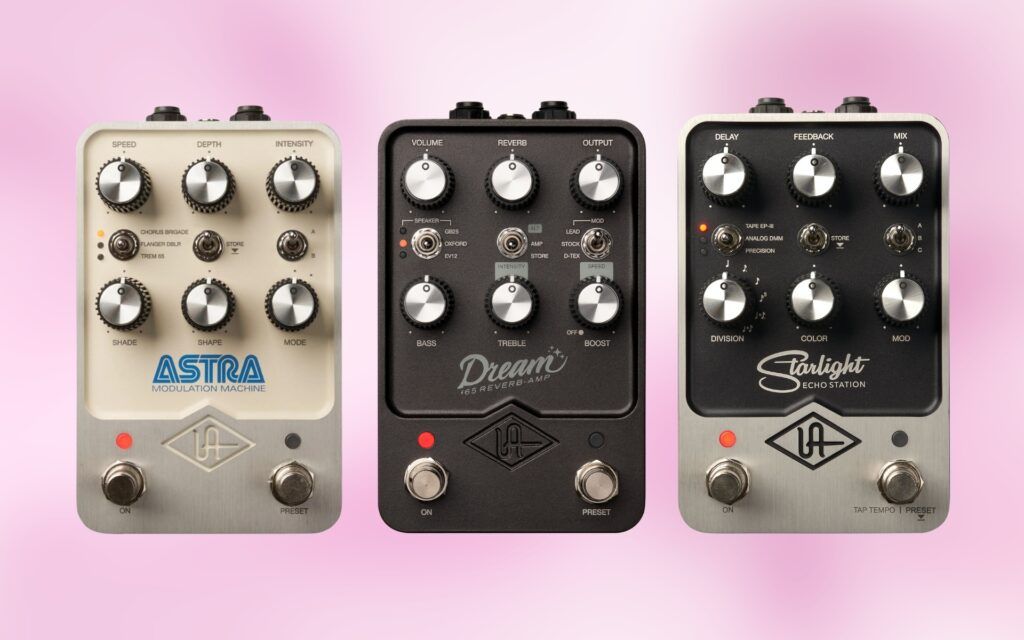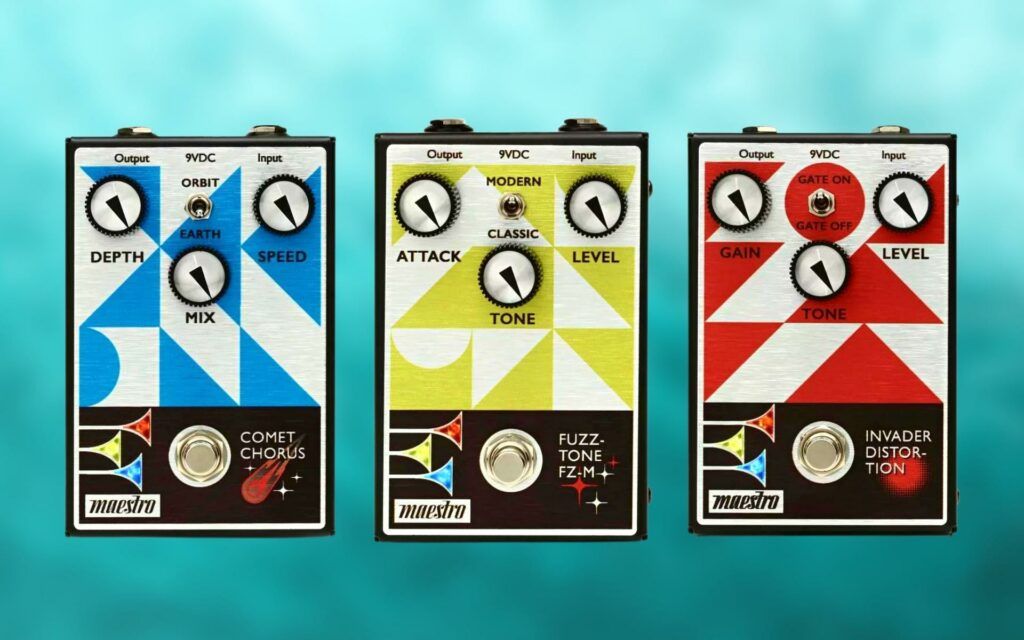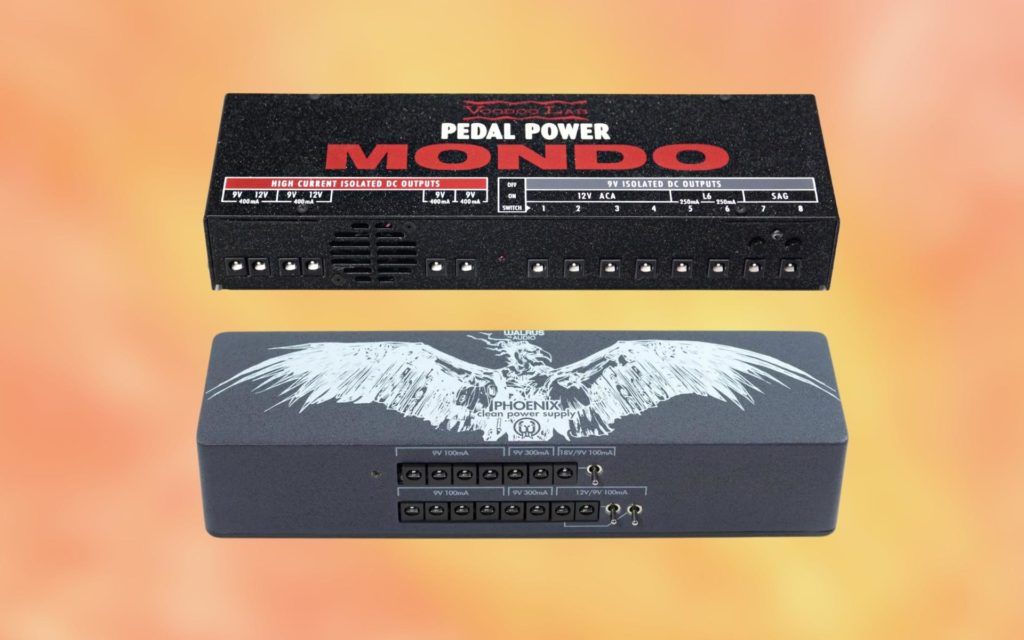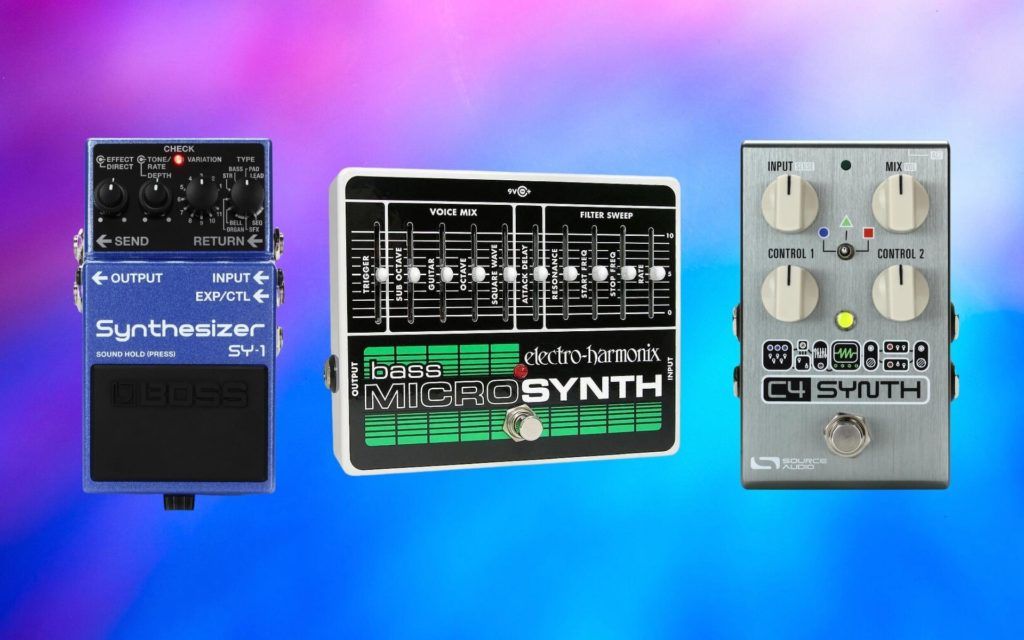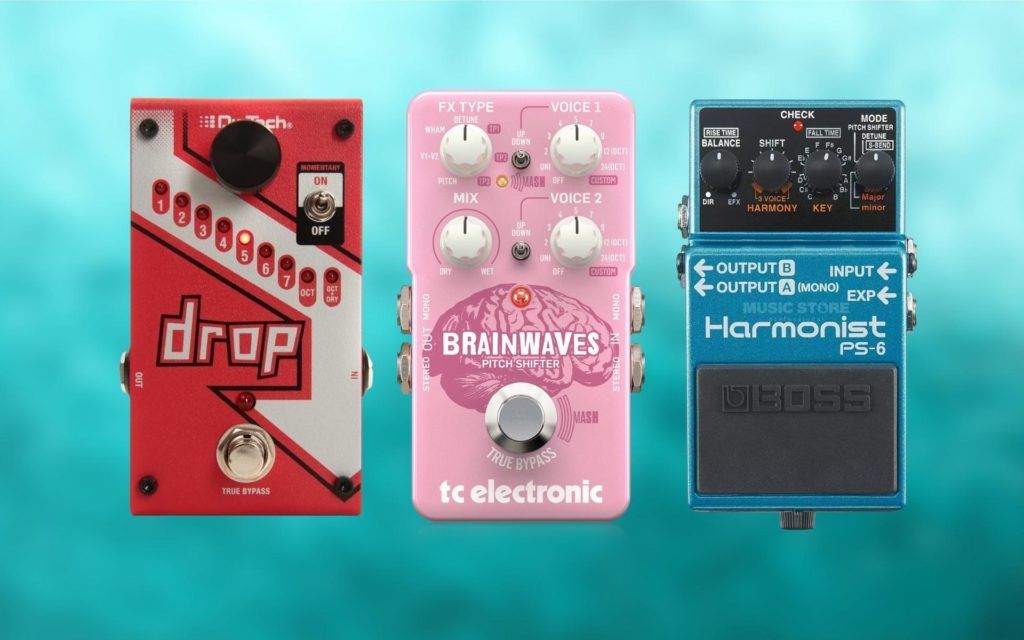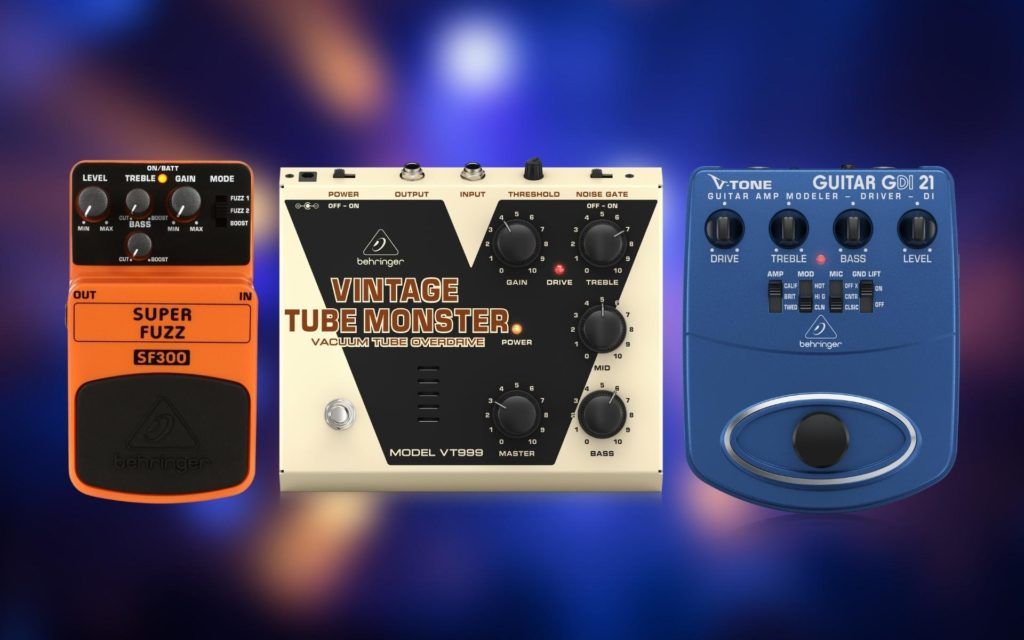We review products independently and our recommendations are genuine. If you purchase through links on our site, we may earn an affiliate commission. Learn More
Envelope filter pedals can transform the sound and dynamics of a bass guitar.
They work by filtering out certain aspects of the bass signal, adding or removing certain frequencies, and responding to the dynamics of your playing.
Each bass envelope filter pedal comes with varying controls, features, and parameters. This effect can be used in almost any genre of music, and the musician can choose whether to apply it subtly or push it to the extremes of its capabilities.
In this guide, we’ll present the best bass envelope filter pedals available today, so that you can enjoy this unique effect when performing live or recording.
In a Rush Roundup
How We Tested
To narrow down our list of the best bass envelope filter pedals, we tested a variety of aspects. This included noting the number of controls and features the pedal boasts, then combining this with the simplicity of operating them.
We then tested the quality of the onboard filter effects, assessing how well the natural tone of the bass is preserved and whether there are any weak spots in the output. Finally, we considered the advanced features of the pedals, such as connectivity and display.
Best Envelope Filter for Bass Reviews
Boss AW-3 Dynamic Wah Pedal
Boss AW-3 Dynamic Wah Pedal Review
With individual inputs for bass and guitar, the Boss AW-3 goes above and beyond the normal capabilities of envelope filter pedals. It blends the effects of an auto-wah with filtering and allows you to customize the effects to suit your style.
When using this pedal, bassists can choose between two modes – fixed-wah, or auto-wah. The former provides a consistent filtering effect that steadily alters the frequency output coming through your bass amp.
Auto wah mode is better suited to funk bass, as it produces a strong rhythmic response, and is affected by the dynamics of your playing.
There is an additional input included on this stompbox for an expression pedal. Utilizing this input will provide you with a greater level of control over the dynamic aspects of the effect.
This pedal also features a unique Humanizer effect, which injects vocal-like qualities into your basslines. This aspect of the pedal sets it apart from many conventional envelope filter devices.
True bypass switching has been used by Boss to minimize the tonal degradation that can occur when many pedals are used simultaneously in the signal chain.
Features
- Separate bass and guitar inputs
- Auto wah and envelope filter effects
- True bypass switching
Pros
- Creates a diverse range of sounds
- Includes a unique “Humanizer” effect
- Durable and compact design
Cons
- Works best when paired with an expression pedal
MXR M82 Bass Envelope Filter Pedal
MXR M82 Bass Envelope Filter Pedal Review
With five onboard rotary controls, the MXR M82 can be used to create an array of envelope filter effects. This pedal is designed specifically for bass guitars and therefore doesn’t compromise any of the low-end power produced by your instrument.
The all-analog design of this pedal gives it a distinctively vintage sound. The Dry and Effect knobs can be used to find the perfect blend of your natural tone, and the processed tone from the pedal.
Moreover, this pedal has true bypass switching installed. As a result, your tone won’t be weakened when the pedal is switched off and not in use.
This pedal also allows you to adjust dynamic aspects of the envelope filter effect, including the attack and delay. Even the slightest tweaks to these controls significantly affect the output.
For such a transformative pedal, it’s remarkable that MXR has been able to keep this stompbox so compact. It’s the perfect size to slot onto your pedalboard without taking up too much space.
The “Q” control is also very useful if you find that the envelope filter sounds too extreme. You can tweak this parameter to soften the effect until it blends with your clean bass tone.
Features
- True bypass switching
- All analog operation
- Five onboard controls
Pros
- Great for funky basslines
- Very easy to operate
- Preserves natural bass tone
Cons
- No additional outputs for expression pedals
Electro-Harmonix Bassballs Nano Twin Dynamic Envelope Filter Pedal
Electro-Harmonix Bassballs Nano Twin Dynamic Envelope Filter Pedal Review
The Electro-harmonix Bassballs Nano is a compact pedal that injects funk into your basslines. It is identically designed to the popular full-sized Bassballs pedal, just in a more conveniently sized format.
The two filters included on this pedal can be used to sweep the frequencies of bass. These filters have vocal-like qualities, which increases the presence of the bass and ensures that it doesn’t get lost amidst drums and guitars.
One of the features I liked the most when analyzing this pedal is the distortion switch. While it is not usually recommended that bassists add a lot of gain to the envelope filter effect, this switch defies all logic – and sounds great.
Adding distortion to the signal transforms the effect into a warm, immersive block of sound. It’s a great tool for bass solos, as engaging the switch will certainly make sure your instrument is heard.
The gain settings are what make the Bassballs Nano stand out, and if you enjoy unique bass tones that go against the norm, this pedal may be the perfect addition to your signal chain.
Features
- Two filter sweep modes
- True bypass switching
- Distortion switch
Pros
- Conveniently compact design
- Boosts the presence of bass notes
- Adds harmonic excitement to your basslines
Cons
- Only has one adjustable control
Aguilar Filter Twin Dual Bass Envelope Filter Pedal
Aguilar Filter Twin Dual Bass Envelope Filter Pedal Review
With two filters that work together simultaneously, this bass envelope pedal can produce a wide-ranging, versatile mix of tonal and dynamic variations.
It features four rotary controls, each of which can be used to alter the core elements of the envelope filter effect. The Blend control allows you to find the right balance of the wet and dry signal so that the effect doesn’t drown out your natural bass tone.
The Aguilar Filter Twin bass envelope filter pedal has an inbuilt compressor, which explains why there is a Threshold control. In addition to providing rhythmic filtering, it also tightens up the dynamic range of your bass output.
Aguilar has installed a very useful and rare feature on this pedal. Even if the battery runs flat, the “Gig Saver” mechanism kicks in, so that the signal can pass through freely without cutting out the sound of your bass.
Perhaps the most important control installed on this pedal is the Velocity knob. This affects the speed that the filters move at, and when turned all the way up it produces some mind-bending effects.
Features
- Analog filter pedal
- Includes two separate filters
- Threshold and Velocity controls
Pros
- Compatible with syncopated, funky bass
- Produces a classic ‘70s sound
- Simple control layout
Cons
- No control for adjusting the dry signal level
Source Audio Spectrum Intelligent Filter Pedal
Source Audio Spectrum Intelligent Filter Pedal Review
Source Audio is known for its meticulous pedal designs. The Spectrum Intelligent Filter is a multi-faceted device, that has all of the capabilities required to transform the sound of a bass guitar.
Combining envelope filtering with gain and modulation effects, the pedal is a useful tool for bassists who switch up their playing styles frequently. Its design is deceptively simplistic, but the sounds it produces are anything but.
There are three main controls for adjusting the envelope filter effect – Input Gain, Sensitivity, and Speed. By tweaking these parameters, you can control the rhythmic and tonal aspects of the core effect.
If you prefer to use more extreme filter effects, you can adjust the Depth, Resonance, and Frequency controls. There’s a huge range of possibilities that can be produced by experimenting with the various parameters on this pedal.
In addition to the 6 onboard filters presets, you can also access many more by using the Neuro Desktop Editor, which is free to download on Windows and Mac devices. There’s also a convenient mobile version for iOS and Android.
Features
- 6 envelope filter presets
- Analog buffered and true bypass switching
- USB connectivity
Pros
- Wide range of filter effect sounds
- Can be used for direct recording
- Tap tempo and expression inputs
Cons
- May require some time to understand the controls
Keeley Neutrino V2 Envelope Filter Pedal
Keeley Neutrino V2 Envelope Filter Pedal Review
Robert Keeley is quickly becoming a legendary figure in the world of effects pedals. His companies designs are often flawless and stand out amongst other similarly priced boutique pedals.
The second edition of the popular Neutrino delivers classic ’70s auto-wah tones, along with some interesting, otherworldly sounds. Keeley was inspired by Grateful Dead guitarist Jerry Garcia’s use of envelope filters when designing this pedal.
A key aspect of this pedal’s success is its high-end analog opt-couplers. These components have been compacted into the practically-sized chassis, ensuring an authentic, analog sound.
The Keeley Neutrino V2 is also a highly responsive pedal. It reacts to the dynamics and velocity of your strums, picks, or slaps, putting you in complete control of the peaks and troughs of the filter effect.
With three main filters presets, operating this pedal is very easy and requires no previous experience with bass envelope filters.
Features
- True bypass switching
- 3 onboard filter types
- Compatible with bass or guitar
Pros
- Responds to picking velocity
- Allows you to customize the tone of the filter
- Classic auto-wah effect
Cons
- Only has single input and output
6 Best Bass Envelope Filter Pedals Buyer's Guide
There are certain effects pedals that musicians often come across, but if you asked them to explain exactly what they do, they’d be unable to do so. Bass envelope filter pedals are one of the effects that have a reputation for being complicated.
Although there are certainly some aspects of bass envelope filters that are quite complex, on the whole, this effect is pretty straightforward once you understand the basics of what it is supposed to do, and how it achieves this.
Envelope filters are arguably more compatible with bass guitars than they are with standard electric guitars, which places them in a rare category of pedals. They’re a great tool for bassists who want to expand their tonal and dynamic options.
In the remainder of this guide, you’ll find all of the essential information on bass envelope filter pedals so that you can make a calculated choice.
Things To Consider When Buying
Consider buffered vs. true bypass
Bass envelope filter pedals come with their true bypass switching or buffered circuitry. The latter is best suited to musicians who use a lot of pedals in their signal chain, while the former is a good choice for less extensive selections.
Think about the onboard controls
The number of adjustable controls and parameters vary depending on the complexity of the envelope bass filter pedal. There are advantages to both a simplistic, minimalist layout and a more advanced layout that affords you more customization.
Decide how many inputs/outputs you need
If you’d like to use an envelope filter pedal to split the dry and wet signals from your bass guitar, you’ll need to choose one that has at least two outputs. Likewise, if you enjoy using expression pedals, choose one that has two inputs.
Consider the pedal’s size
Investing in a bulky bass envelope filter pedal may provide you with more options, but it’s important to check that the device can fit onto your pedalboard with your existing bass envelope filter pedal.
The Key Qualities of Bass Envelope Filter Pedals
Bass envelope filter pedals are designed to create a distinctive, unique effect that pulsates with a consistent rhythm. These pedals are very similar to auto-wah stompboxes but often include some additional controls and features.
If you’ve ever heard the “quacking” sound of a bassline in 70s funk music, this is the effect that an envelope filter pedal aims to achieve.
Unlike a wah pedal that is operated manually using a rocker plate foot pedal, the envelope filter uses predetermined settings to control the rhythm, speed, and tonal aspects of the filtering effect.
One essential quality that a bass envelope filter must possess, is the ability to preserve the power and definition of the low notes that the instrument produces.
There’s a reason that filter pedals are more commonly used with guitars – they often struggle to have the desired impact on the lower octaves of bass.
However, bass envelope filters are designed specifically to alter the lowest notes that the instrument produces without weakening them or causing any dynamic inconsistencies.
How Does a Bass Envelope Filter Work?
To ensure that you choose the best quality envelope filter pedal for your bass signal chain, it’s important to understand the most efficient way that these devices can be designed.
Without getting too technical, a filter is essentially a type of electronic circuit that directly impacts the levels of any frequency that is sent through it.
For example, a high-pass filter, which is commonly used in EDM and other electronic genres, only allows the high frequencies to be transmitted through the circuit.
Low-pass filters work in the opposite way – by blocking out the highs and allowing the lows to pass through.
This is important to know when discussing bass envelope filters, as they essentially use a conventional filter circuit while the frequencies that are allowed to pass through alter at a specific rhythm or rate.
The more sensitive the filter is, the more dramatic the fluctuations in frequency will be.
Controls and Parameters
Like all effects pedals, bass envelope filters come with a varying number of adjustable controls and parameters.
For bassists who would like to use the filter pedal to manually alter the rhythmic, tonal and dynamic aspects of their output, I would recommend looking for a device that goes beyond the standard 2-knob layout.
All bass envelope filter pedals are likely to feature a “gain” control, along with a “Q” control. If you’d like more freedom to experiment, look for a pedal that also includes additional controls such as:
- Sensitivity
- Peak
- Resonance
- Feedback
The more controls you have at your disposal, the more you will be able to shape the filter effect to your liking.
Bass Envelope Filter Pedals FAQs
Is a Wah Pedal an Envelope Filter Pedal?
Wah pedals work in a very similar way to envelope filter pedals. They use a filter, with a varying notch which alters the frequencies that are allowed to pass through and those that are blocked.
The main difference is that wah pedals are operated manually, while envelope filter pedals use settings that are determined before the effect is applied to control the way the filter responds. Therefore, envelope filter pedals are very similar to auto-wah pedals.
Why is it Called an Envelope Filter Pedal?
The reason for the name envelope filter pedals is that the basic filter is controlled by an envelope. The filter is responsible for allowing certain frequencies to pass and does this by detecting the pitch of the inputted signal.
The envelope then acts accordingly on the filter to change the frequencies that are allowed to pass through the filter, hence the name, envelope filter pedal.
What is the “Q” on a Bass Envelope Filter Pedal?
Most bass envelope filter pedals include a “Q” control, which is responsible for adjusting the sharpness of the effect. Wide Q settings will allow more frequencies to pass through, while a narrower Q will make the filter effect sound more extreme.

